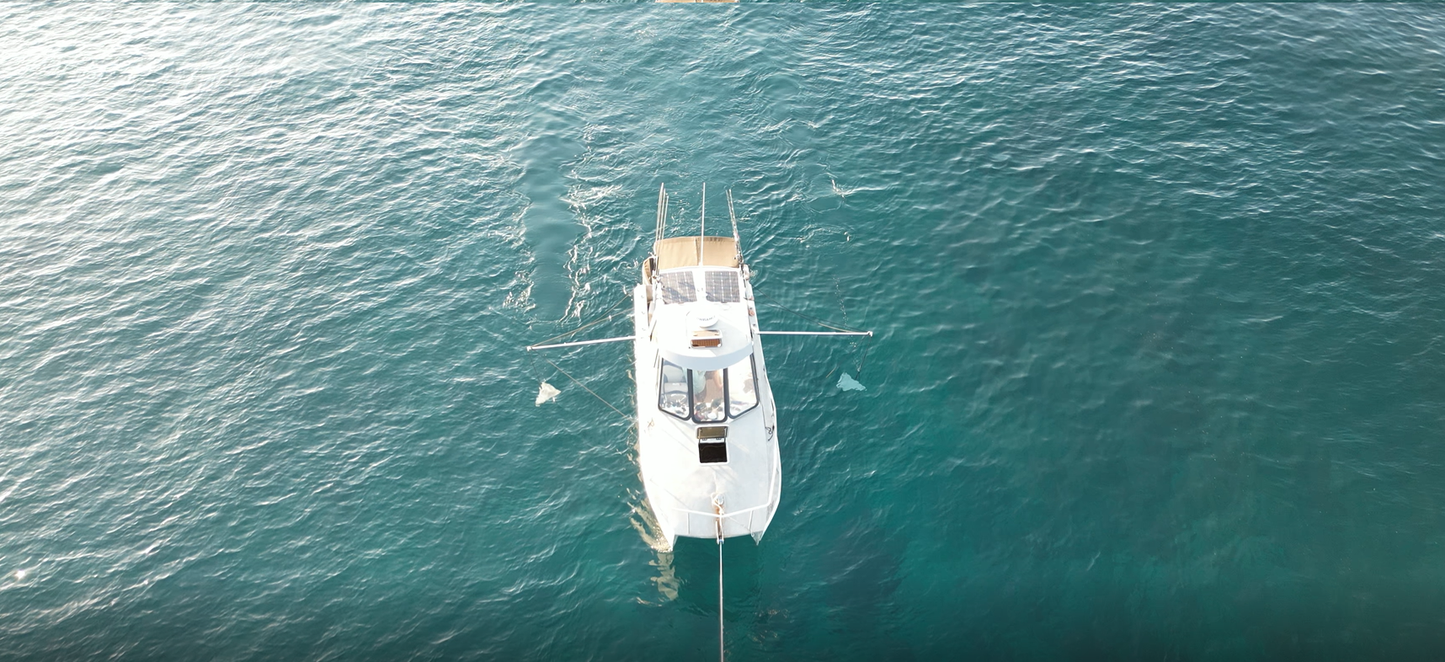MONEY BACK GUARANTEE!
We know our stabilisers work, but do you?
Try our stabilisers for 30 days now.

Our Stabilisers are specifically designed to reduce the boats' roll movement whilst at anchor or drifting. Computer designed stabiliser plates with a tuned weight system, coupled with fully welded adjustable power boom poles create an incredible amount of stabilisation power.
How do they work?
Utilising the infinite power of hydrodynamic resistance, our stabiliser system will stabilise your vessel continually, flawlessly and without fuss.
You will instantly notice a reduction in the boat's roll speed. The boat will settle much faster and reduce most of the boats rolling movement. In a situation of wind against current/tide, you will notice the stabilisers will assist to straighten the boat into the current which further reduces the rolling movement of the boat.
What needs to be installed?
It only takes 5 minutes to install the supplied small base bracket using our provided fasteners and you're done!
Simply pin the stabilisers into the base brackets and start enjoying your boat more.
NO electricity or generator is needed.
NO noise created when deployed and stabilising the vessel.
NO large storage space required or 'heavy items' such as a bulky Gyro.
NO periodic maintenance or servicing or ongoing costs.
As a true captain of your boat, you'll understand the importance of quality materials and components. Here's what we use:
- 316 grade stainless steel fasteners, components and nyloc nuts
- 5083 high tensile marine grade aluminium
- Dyneema rope - hand spliced
- Double Braid Polyester main lines - hand spliced
- Components are laser cut and locally welded for precision, strength and longevity.
Stabilising in a coastal bar
Stabilisers in action!
Stabiliser in high current flow

Australian Boat Stabilisers
Boat Stabiliser Kit
Regular price
$2,250.00 AUD
Regular price
Sale price
$2,250.00 AUD
Unit price
per
Tax included.












